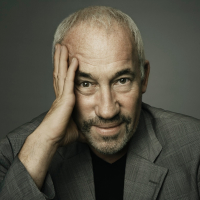
Dickens’s first novel—in which his exhilaration at finally bursting into fiction is palpable. He worked on a huge canvas, using a multitude of modes and styles, painting a picture of an England that was at once contemporary and mythic. In a series of loosely linked episodes, the comedy explodes off the page, and at the center of it all is one of his greatest creations: the genuinely good man, Samuel Pickwick, Esq., one of literature’s few credible innocents.

This novel, his fifth, had several false starts and passed through the hands of a number of publishers. It was the first of Dickens’s books not to be written in a rush of adrenalin, and it is less immediately engaging than some. Barnaby Rudge never quite reaches the archetypal aspect of most of Dickens’s title characters. But there are compensations: Dickens was fascinated by the deluded and dangerous Lord Gordon, who precipitated the anti-Catholic riots which engulfed London in 1780, and which are described with extraordinary violence, anticipating not only the comparable scenes in A Tale of Two Cities, but scenes from today’s newspapers. The depiction of post-riot London uncannily anticipates Ground Zero.

Told and retold in so many different media, the book repays rereading, an astonishingly original, cinematic fable, sweeping its terrified hero through his own past, across his present, and into his bleak future. Dickens is absurdly credited with inventing Christmas. (Washington Irving had powerfully done that some years before in Geoffrey Crayon.) But he certainly made the words Merry Christmas actually mean something beyond general good cheer, when the transformed and redeemed Scrooge is at last able to utter them. And so, as Tiny Tim observed, “God bless us, every one!”
Lazy Tour of Two Idle Apprentices

This series of sketches, co-written with Wilkie Collins in 1858, filled a few pages of Dickens’s monthly magazine Household Words. But as so often with Dickens, his inner complexities and the tumultuous state of his life—he had just fallen in love with Ellen Ternan and was contemplating the huge upheavals that that would precipitate—transform something workaday into an astonishing document. The self-portrait he offers (“a man who can do nothing by halves ... a fearful man”) is profoundly candid, and one of the book’s episodes features the story of a man who sits by the bedside of his ailing wife, willing her to die, which was pretty much what Dickens was feeling about his own wife at the time.

Dickens started writing this complex novel at the point when he had been forced to abandon his career as a reader of his own novels. He was dazed and ill, his left foot massively swollen. He was in constant pain down his left side, and sometimes unable even to pronounce the words of his script. His doctor warned him that if he continued, he would have a stroke and be permanently disabled. He retired to his house in Gadshill in Kent and forthwith started writing Drood. Nothing in the almost hallucinatory and beautiful style would lead a reader to guess at the near-terminal state of its author. Its exploration of opium addiction, double identity, and murder marks a return to the comedy of the past. But he had demanded too much of his body in a lifetime of strenuous achievement, and, after one more brief return to public performance, he died with the novel unfinished, a tantalizing departure from the scene of the most constantly surprising and challenging English author of the 19th century.






